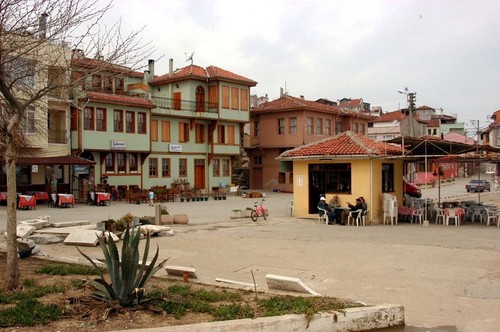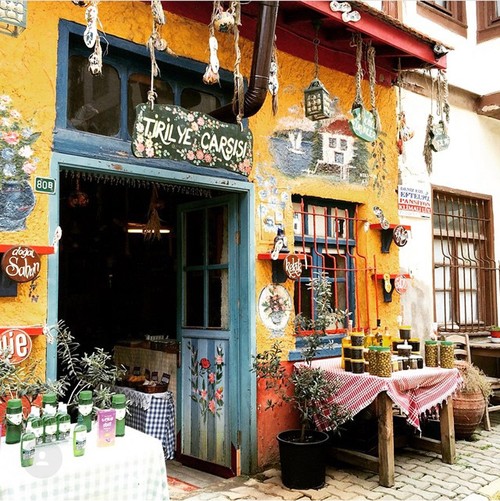© Turkuvaz Haberleşme ve Yayıncılık 2026
With a history of habitation that goes back to the 5th century B.C., Tirilye was known as Brylleion in Greek. When Southern Marmara became very popular for its local goods, Tirilye was one of the many integral ports that were established in the ancient era.

Tirilye was also quite famous for its olives, and the former Greek inhabitants also took part in the silk trade. The name Tirilye is believed to come from the famous local red mullet fish, called Trigleia, which graced the tables of Byzantine emperors. After the population exchange between Greece and Turkey in 1923, the town's Greeks left their homes and emigrated to Greece.
An important religious center for Greek Orthodox Christians, Tirilye's Ottoman and Byzantine architecture is especially fascinating, and it's quite the experience wandering the streets and gazing on the many beautiful facades.

With a population of 2,500 inhabitants, Tirilye is a perfect getaway spot for those looking for an idyllic weekend, discovering and tracing the footsteps of different cultures. Well, then what destinations can you visit in Tirilye? Where should we visit for a good weekend? Here is a concise guide to Tirilye, the cutest town of Bursa.
Tirilye houses
Tirilye houses are generally made of wood and adobe and mostly built as three-story structures. The houses reflect Byzantine and Greek architecture. The entrance floor is used as hearthstone and olive storehouse, and families spend most of the time here in summer months. The second floor is the mezzanine. The ceilings on this floor are open. The third floor is for sitting areas and bedrooms with very high ceilings.
Stone School
The seminary, which was used as a primary school until the 1980s, was constructed in the Neo-Classical style in 1909. The school, where former Cyprus President Makarios III was educated, was turned into the Darel Eytam School to educate orphans and the children of martyrs by Kazım Karabekir in 1924. Now, it lies in ruins, as preservation work has never been done. It is surrounded by a wire fence to prevent more damage.
The Dündar House
Known as Hagios Ioannes Greek Church (Yuannes Church) in the past, Dündar House is called the stone building today, as the church was used as private property after the Greeks abandoned Tirilye. At the main entrance, which dates back to the 19th century, an arched, stone gate welcomes people. Look at the walls of the church to see authentic Byzantine architecture, as stone-carved engravings and Byzantine motifs catch the eye. The three-story west facade of the house is used as a residence today.
The Kemerli Church
The Panagia Pantobasilissa Church or the Kemerli Church is known as the first museum whose walls were painted in history. Some manuscripts indicate the church is dedicated to the Virgin Mary. The garden of the ruined church is full of fig and plum trees. Paintings on the walls are damaged as they were dilapidated, scratched and painted. Reportedly, the Fener Greek Patriarchate bought the church, which will be restored and used for rites a few times a year.
The Medikion Monastery
The Medikion Monastery, also known as the Monastery of Saint Sergios Medikion, is located on the route going to the port of Eşkel from Tirilye. There is a Greek graveyard northwest of the monastery. The monastery became known as the Medikion Monastery in the 11th century. It was probably built in the 8th century. Only walls and magnificent entrance gates (200 kilos) of the monastery, which was used as a farm when it was established, remain.
